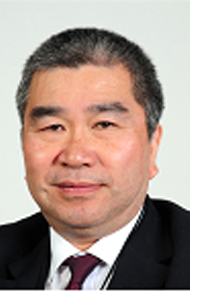




ALEX LAW


alaw@ntu.edu.sg





Protein Science in Singapore
Abstract
In this informal dinner talk I will give an overview of research activity in protein science in Singapore.
2002-present: Professor, School of Biological Sciences, Nanyang Technological University, Singapore
1986-2002: Senior Scientist, Medical Research Council Immunochemistry Unit, Department of Biochemistry, Oxford, UK
1982-1986: Lister Institute Fellow, MRC Immunochemistry Unit, Department of Biochemistry, Oxford, UK
1981-1982: Research Fellow, MRC Immunochemistry Unit, Department of Biochemistry, Oxford, UK
1978-1981: Research Associate, Department of Genetics, Washington University School of Medicine, St Louis, Missouri, USA
1978: PhD, Department of Biology, Harvard University, USA
Research Fields and Interests:
Biochemical studies in the structure and function of proteins in the immune system.
Selected Publications:
1. Dodds, A.W., Ren, X.D., Willis, A.C., and Law, S.K.A. (1996) The reaction mechanism of the internal thioester in the human complement component C4. Nature 379: 177-179.
2. Law, S.K.A. and Dodds, A.W. (1997) The internal thioester and covalent binding properties of the complement proteins C3 and C4. Protein Science 6: 263-274.
3. Gadjeva, M., Dodds, A.W., Taniguchi-Sidle, A., Willis, A.C., Isenman, D.E., and Law, S.K.A. (1998) The covalent binding reaction of complement component C3. J. Immunol. 161: 985-990.Shi, M.L., Foo, S.Y., Tan, S.M., Mitchell, E.P., 4.
4. Law, S.K.A., and Lescar, J. (2007) A structural hypothesis for the transition between bent and extended conformations of the leukocyte 2 integrins. J. Biol. Chem. 282: 30198-30206.
5. Cheng, M., Foo, S.Y., Shi, M.L., Tang, R.H., Law, S.K.A., and Tan, S.M. (2007) Mutation of a conserved asparagine in the I-like domain promotes constitutively active integrins L2 and IIb3. J. Biol. Chem. 282: 18225-18232.
6. van de Vijver, E., Maddalena, A., Sanal, Ö., Holland, S.M., Uzel, G., Madkaikar, M., de Boer, M., van Leeuwen, K., Köker, M.Y., Parvaneh, N, Fischer, A., Law, S.K.A., Klein, N., Tezcan, F.I., Unal, E., Patiroglu, T., Belohradsky, B.H., Schwartz, K., Somech, R., Kuijpers, T.X., and Roos, D. (2012) Hematologically important mutations: Leukocyte adhesion deficiency (first update). Blood Cells, Mol. Dis. 4: 53-61.